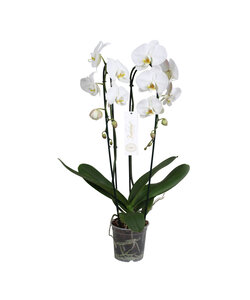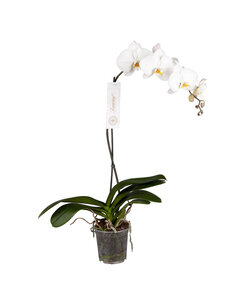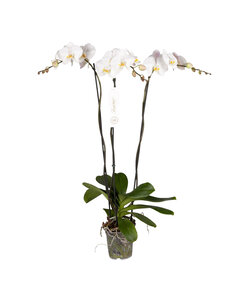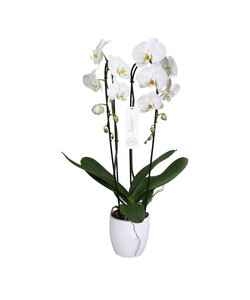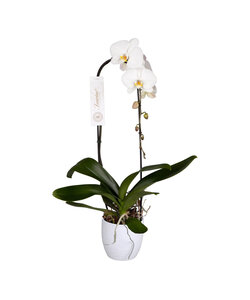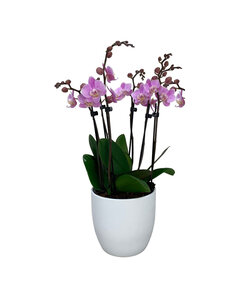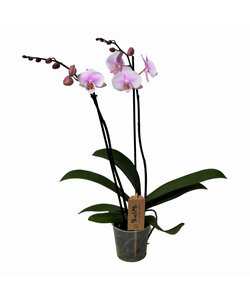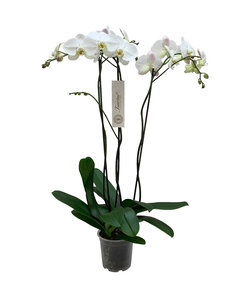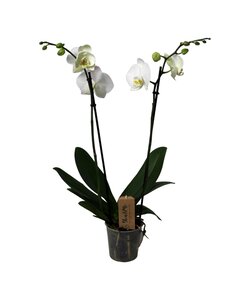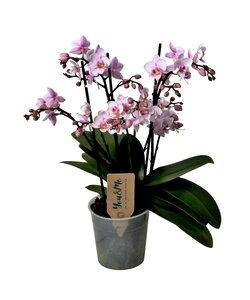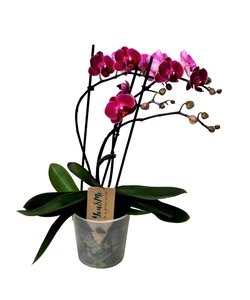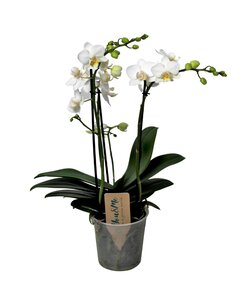
Phalaenopsis
The Phalaenopsis thrives best with a minimum night temperature of 16°C and a maximum daytime temperature of 32°C. An ideal daytime temperature is between 20 and 22°C. This orchid requires a lot of light but does not tolerate direct sunlight, especially in
Read moreThe Phalaenopsis orchid, often referred to as the "Moth Orchid," is a remarkable and popular orchid species known for its stunning beauty and relatively easy care requirements. This orchid species originates from Southeast Asia, and it has captured the hearts of plant enthusiasts around the world due to its graceful appearance and wide range of colors and patterns.
Appearance
Phalaenopsis orchids are renowned for their striking appearance. They typically feature long, arching stems adorned with lush, leathery leaves. What truly sets them apart, however, are their exquisite flowers. These blooms come in a multitude of colors, including shades of white, pink, purple, and even vibrant yellows and oranges. The petals are often adorned with intricate patterns, making each blossom a unique work of art. The most common color variety is the classic white or cream with a contrasting lip. The shape of their petals often resembles that of moths in flight, which is how they acquired their nickname.
Light and Placement
Proper placement is key to the success of your Phalaenopsis orchid. These orchids thrive in bright, indirect light. A west or east-facing windowsill is an ideal location as it allows for the right balance of sunlight without exposing the plant to harsh, direct rays. If you don't have access to such a spot, consider using sheer curtains or blinds to filter the light. In lower light conditions, Phalaenopsis orchids may struggle to produce flowers.
Temperature and Humidity
Phalaenopsis orchids prefer warm and consistent temperatures. They thrive in daytime temperatures between 21-27°C and nighttime temperatures around 15-18°C. Avoid placing them near drafts, as sudden temperature fluctuations can be detrimental. These orchids also appreciate higher humidity levels, ideally around 50-70%. To achieve this, consider using a humidity tray or a room humidifier, especially in dry indoor environments.
Watering and Feeding
Overwatering is a common mistake with Phalaenopsis orchids. They prefer a well-draining growing medium, such as orchid bark or sphagnum moss. Water thoroughly but allow the growing medium to dry out slightly between waterings. Typically, watering every 1-2 weeks is sufficient, but it can vary depending on factors like humidity and pot size. It's best to water in the morning and avoid getting water on the leaves, as this can lead to rot.
Fertilize your Phalaenopsis orchid regularly but lightly. Use a balanced orchid fertilizer and apply it at half-strength every 2-4 weeks during the growing season (spring to early autumn). Reduce or eliminate fertilization during the dormant period in winter.
Repotting
Phalaenopsis orchids typically require repotting every 2-3 years or when you notice the potting medium breaking down. Repot in the spring when new growth begins. Use a slightly larger pot with fresh orchid mix, and be gentle with the roots as they are quite sensitive.
In conclusion, the Phalaenopsis orchid is a captivating addition to any indoor garden. With the right care in terms of light, temperature, watering, and feeding, you can enjoy its splendid blooms for years to come. Its elegant appearance and relatively low maintenance needs make it a favorite among both seasoned gardeners and those new to orchid cultivation, adding a touch of exotic beauty to any space.


